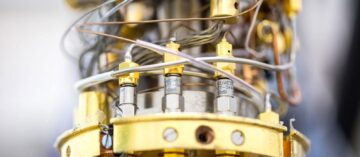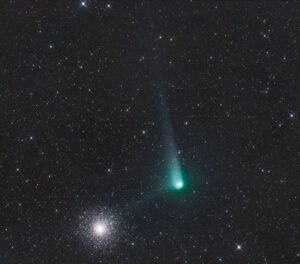Terahertz radiation – also known as submillimeter radiation, can penetrate many nonmetallic materials and detect signatures of specific molecules. Due to their interesting properties, they can be used in several applications. The majority of terahertz devices currently in use, however, are expensive, slow, bulky, require vacuum systems, and operate at extremely low temperatures, making it difficult to develop devices that detect and create images from terahertz waves.
Now, MIT scientists, in collaboration with the University of Minnesota and Samsung, have developed a low-cost terahertz camera. This new camera can detect terahertz pulses rapidly, with high sensitivity, and at room temperature and pressure. Moreover, it can simultaneously capture information about the orientation, or “polarization,” of the waves in real-time, which existing devices cannot.
Asymmetrical molecule-containing materials can be identified, or their surface topography can be ascertained using this information.
Quantum dots, used in the new technology, have recently been discovered to emit visible light when activated by terahertz vibrations. Then, the visible light can be observed with the unaided eye and captured by a device that resembles the detector of a regular electronic camera.
Scientists devised two different devices: One uses the quantum dot’s ability to convert terahertz pulses to visible light. The other one produces images showing the polarization state of the terahertz waves.
The new “camera” is made up of several layers and was created using industry-standard manufacturing processes similar to those for microchips. The substrate is covered with a layer of light-emitting quantum dot material, followed by a layer of gold nanoscale parallel lines divided by tiny slits. Finally, a CMOS chip is utilized to create an image. A polarimeter, which is similar to that of the polarisation detector, can detect the polarisation of incoming beams by using ring-shaped nanoscale slits.
Professor of chemistry Keith Nelson said, “The photons of terahertz radiation have extremely low energy, which makes them hard to detect. So, what this device is doing is converting that little tiny photon energy into something visible that’s easy to detect with a regular camera.”
During experiments, the camera detected terahertz pulses at low-intensity levels that surpassed the capability of today’s large and expensive systems. Moreover, it also shows the detector’s capabilities by taking terahertz-illuminated pictures of some of the structures used in their devices.
Scientists noted, “They have cracked the terahertz pulse detection problem with their new work, the lack of good sources remains — and is being worked on by many research groups around the world.”
“The terahertz source used in the new study is a large and cumbersome array of lasers and optical devices that cannot easily be scaled to practical applications, but new sources based microelectronic techniques are well under development.”
“I think that’s the rate-limiting step: Can you make the [terahertz] signals in a facile way that isn’t expensive? But no question’s coming.”
Sang-Hyun Oh, a co-author of the paper and a McKnight Professor of Electrical and Computer Engineering at the University of Minnesota, adds that while present versions of terahertz cameras cost tens of thousands of dollars, the inexpensive nature of CMOS cameras used for this system makes it “a big step forward toward building a practical terahertz camera.”
Even though the camera system is still far from commercialization, scientists are using the new lab device when they need a quick way to detect terahertz radiation.
The research team included Daehan Yoo at the University of Minnesota; Ferran Vidal-Codina, Ngoc-Cuong Nguyen, Hendrik Utzat, Jinchi Han, Vladimir Bulović, Moungi Bawendi, and Jaime Peraire at MIT; Chan-Wook Baik and Kyung-Sang Cho at Samsung Advanced Institute of Technology; and Aaron Lindenberg at Stanford University. The work was supported by the U.S. Army Research Office through the MIT Institute for Soldier Nanotechnologies, the Samsung Global Research Outreach Program, and the Center for Energy Efficient Research Science.
Journal Reference:
- Shi, J., Yoo, D., Vidal-Codina, F. et al. A room-temperature polarization-sensitive CMOS terahertz camera based on quantum-dot-enhanced terahertz-to-visible photon upconversion. Nat. Nanotechnol. (2022). DOI: 10.1038/s41565-022-01243-9













